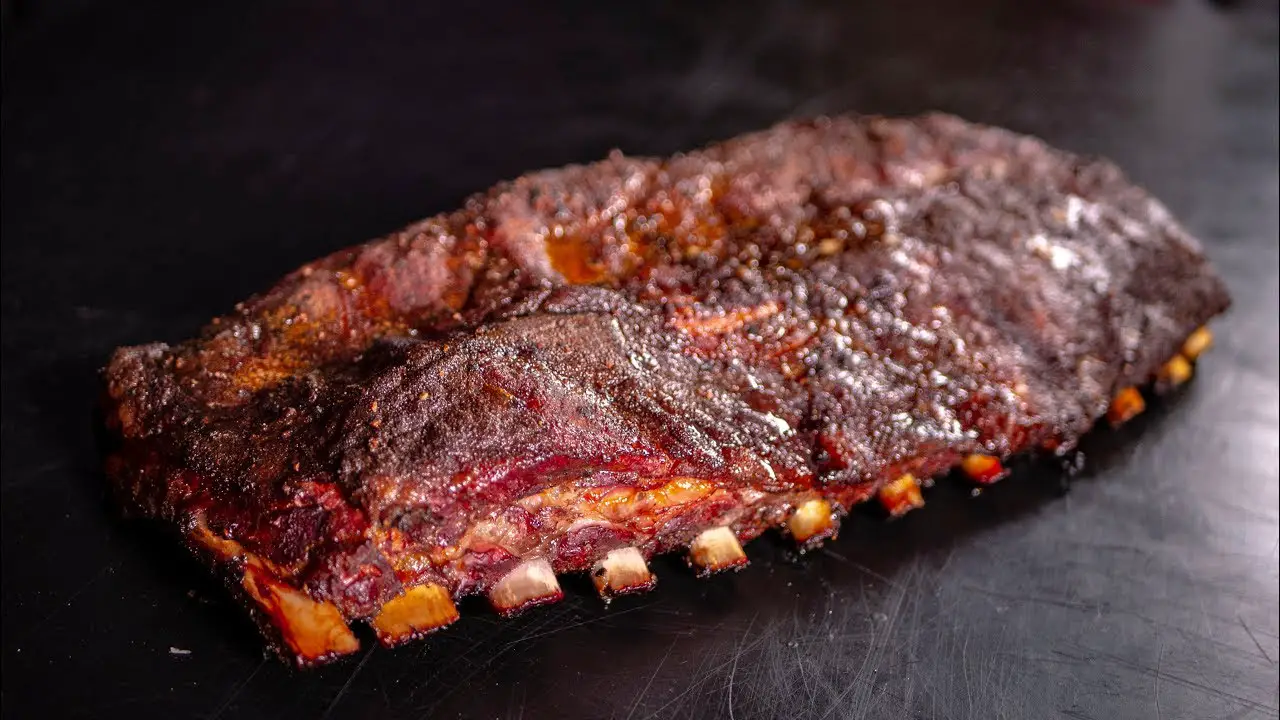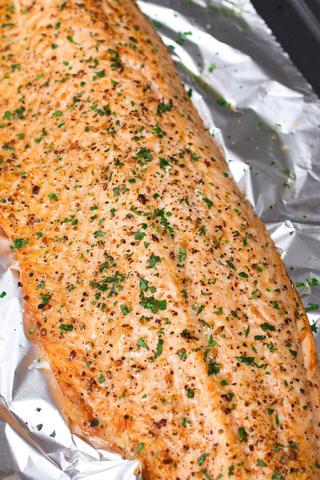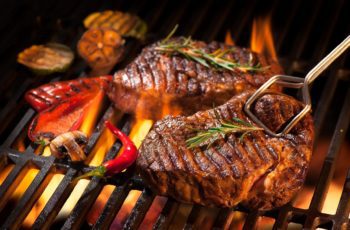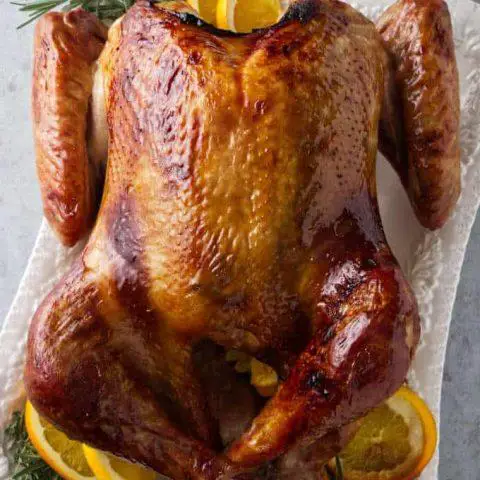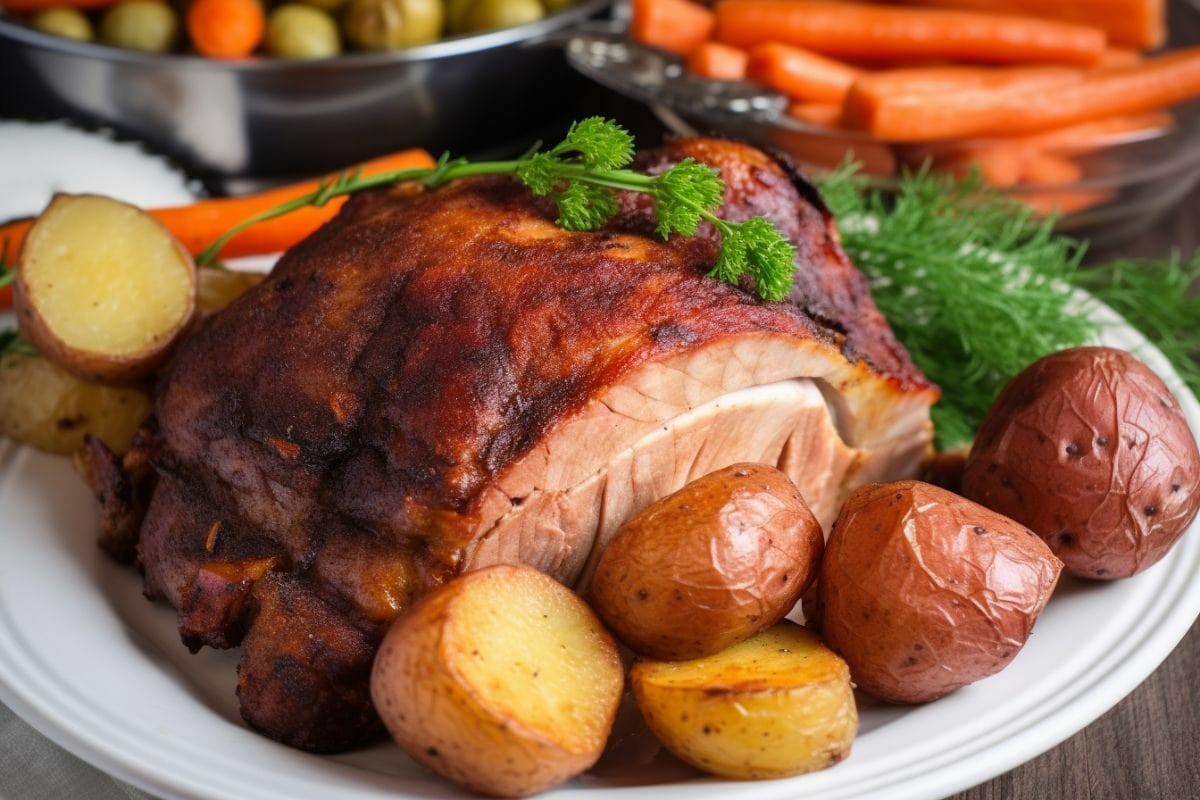
“Pork Butt Stall Temp: Mastering the Art of Perfectly Cooked Meat. Uncover the secrets to achieving a tender and succulent pork butt by mastering the stall temperature. From expert tips to foolproof techniques, elevate your grilling game with this essential guide.”
Pork Butt Stall: Internal Temps, Wrap Material, and More
When smoking pork butt, the goal is to break down collagen and connective tissues until the meat easily “pulls apart.” However, pork butt can reach a temperature plateau or “stall” at around 150-165F internally. This stall occurs due to evaporative cooling as the moisture on the surface of the meat evaporates and cools it down. The stall can last anywhere from 2-6 hours, during which the internal temperature may even decrease.
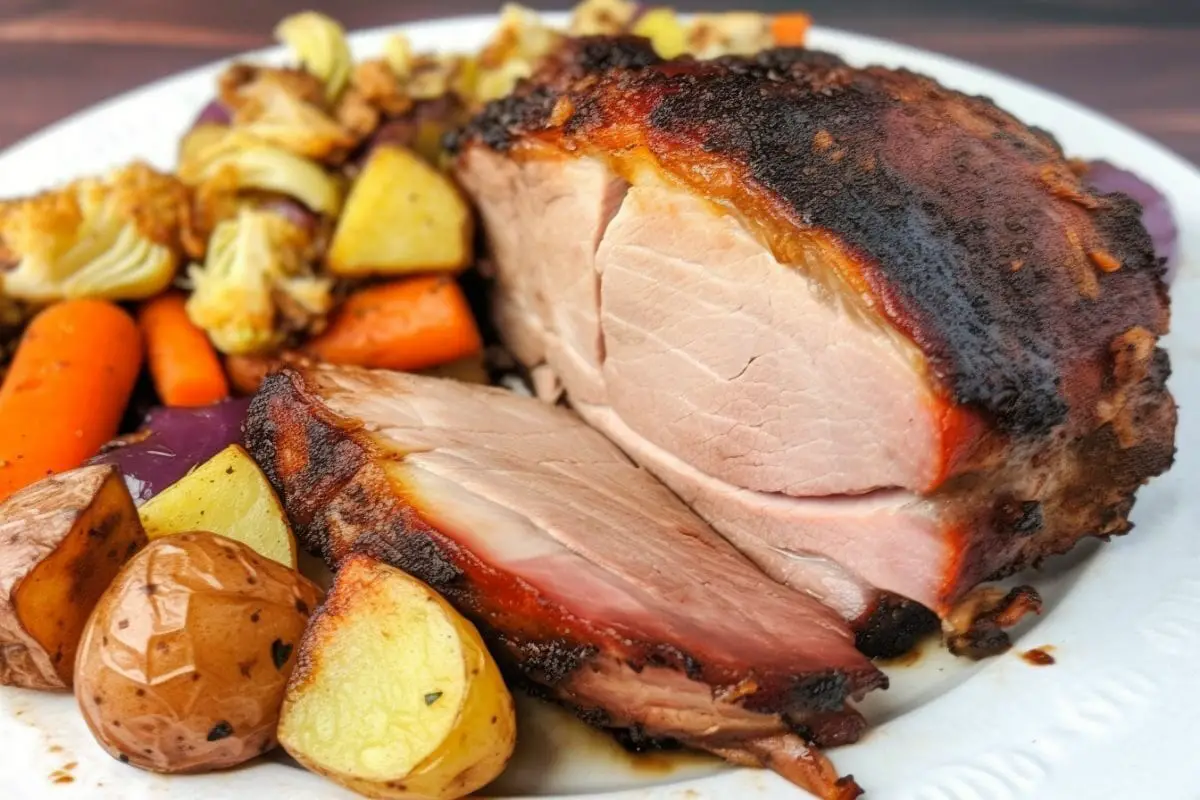
Some articles recommend wrapping the pork butt during or before the stall to speed up cooking. However, waiting longer to wrap allows the meat to take on more smoke flavor and develop a better bark. Wrapping with aluminum foil or using a foil pan with added liquids can help beat the stall by increasing thermal conductivity and humidity.
When probing for tenderness, it’s best to avoid the money muscle and probe deeper into the thickest part of the pork butt. The meat is usually probe tender at temperatures between 190-205F, but it’s important to rely on probe tenderness rather than a specific internal temperature.
What is a Pork Butt Stall?
A pork butt stall refers to the phenomenon that occurs during the smoking process of pork butt or shoulder, where the internal temperature of the meat plateaus or “stalls” for several hours. This typically happens at around 150-165F internal temperature. The stall occurs due to evaporative cooling, as the moisture on the surface of the meat evaporates and cools it down. During this stall, the meat continues to cook but at a slower rate.
The temperature of the meat can actually decrease or remain stagnant during a pork butt stall due to evaporative cooling. As the moisture on the surface of the meat evaporates, it causes a cooling effect. This evaporation rate increases as the temperature of the cold meat rises, until it reaches a point where it balances out with the heat input. The meat will then plateau until all the moisture on its surface is gone.
The duration of a pork butt stall can vary depending on various factors such as size of the pork butt, smoker type, temperature, and more. On average, a pork butt stall can last anywhere from 2 to 6 hours. It’s important to note that during this time, it’s not uncommon for the internal temperature to go down before eventually increasing again.
What Temperature Does Pork Butt or Shoulder Stall?
The pork butt stall usually happens at around 150-165F internal temperature. This is the point where the meat plateaus and stays at the same temperature for several hours. The stall occurs because of evaporative cooling, where the moisture on the surface of the meat evaporates, causing it to cool down.
The duration of a pork butt stall can vary depending on various factors such as the size of the pork butt, the smoker used, and the accuracy of the thermometer. On average, a pork butt stall can last anywhere from 2 to 6 hours.
During a pork butt stall, it is not uncommon for the internal temperature to decrease instead of continuing to rise. This happens as moisture evaporates from the meat’s surface, causing a cooling effect. The temperature will remain stable until all the surface moisture is gone.

How Long will it Last? Why Does the Temperature Go Down?
The pork butt stall can last anywhere from 2 to 6 hours, depending on various factors such as the size of the pork butt, the smoker used, and the temperature. During this time, it is not uncommon for the internal temperature of the meat to actually go down. This happens because of evaporation cooling, where as the meat “sweats,” the moisture evaporates and cools the meat. It is similar to how our bodies sweat to cool down in hot weather.
The stall occurs when the cooling effect from evaporation balances out the heat input, causing the temperature to plateau. The meat will remain at this temperature until all the surface moisture is gone. It is important to note that most of the bark formation occurs after the pork shoulder stall, so it is recommended to wait longer before wrapping.
In order to beat a pork butt stall and continue cooking the meat, wrapping it tightly with aluminum foil is commonly done. This method, known as a “Texas Crutch,” helps increase thermal conductivity and speeds up the cooking time. Some people also use liquids like apple juice or apple cider vinegar when wrapping to add flavor and increase heat transfer.
There are different materials that can be used for wrapping, such as aluminum foil or butcher paper. Foil pans are also popular because they allow for easy wrapping, resting, and serving of the pork butt. It is a personal preference which method to use.
When probing a pork butt for tenderness, it is best to probe in the thickest part of the meat while avoiding hitting any bones. The only muscle that should not be probed for tenderness is the “Money muscle” or pectoralis profundi as it finishes faster than other parts of the pork butt.
Pork butt is a large muscle that takes a long time to cook, typically around 1 ½ – 2 hours per pound of meat. Because of this, it is often smoked the day before serving. After smoking, the pork butt can be hot held overnight to keep it out of the food danger zone where bacteria can grow rapidly.
Overall, the duration of a pork butt stall and the temperature going down during this time are important factors to consider when smoking pork butt to achieve the desired tenderness and flavor.
How to Beat a Pork Butt Stall
One way to beat a pork butt stall is by wrapping the meat tightly with aluminum foil, commonly known as the “Texas Crutch.” Wrapping the meat helps to increase thermal conductivity and speeds up the cooking time. It also increases humidity, which combats the moisture loss from the meat. Some people like to add liquids like apple juice or apple cider vinegar when wrapping to enhance flavor and further increase thermal conductivity.
Another option is to use butcher paper instead of foil for wrapping. Butcher paper is porous and allows for some steam to escape, resulting in a better bark formation. However, it may leach out added liquids if used in combination with them.
Using aluminum pans is another method to beat a pork butt stall. The pan can be filled with liquids like water, apple juice, or apple cider vinegar, and as the pork continues cooking, it will braise and steam in this liquid. Aluminum pans are convenient as they can be used for wrapping, resting, hot holding, pulling the pork, and serving.
Aluminum Foil, Butcher Paper, or Aluminum Pan?
Wrapping the pork butt during the stall is a common practice to help speed up the cooking process and retain moisture. There are three main options for wrapping: aluminum foil, butcher paper, or aluminum pan.
Using aluminum foil provides a tight seal and helps trap in moisture. It also increases thermal conductivity, allowing for faster cooking time. However, it can result in a softer bark due to the trapped steam.
Butcher paper is porous and allows some steam to escape, which helps maintain a crispy bark. It also provides better heat transfer than foil but may not retain as much moisture.
Using an aluminum pan is convenient because you can wrap and serve the pork butt in the same pan. The pan can be tightly covered with foil to create a similar effect as wrapping with just foil. This method combines the benefits of both foil and butcher paper by trapping some steam while still allowing for airflow.
Ultimately, the choice between aluminum foil, butcher paper, or aluminum pan depends on personal preference and desired outcomes for the texture of the bark and moisture retention in the meat.
Probing Pork Butt While it’s Stalling
When the pork butt is in the stall phase, it can be a good time to probe the meat to check for tenderness. Unlike brisket, which has different muscles that cook at different temperatures, pork butt is made up of multiple muscles that converge at the shoulder. It is heavily marbled with fat, which helps prevent it from drying out during smoking.
To probe the pork butt while it’s stalling, you should aim for the thickest part of the meat, avoiding the blade bone. Insert the probe until you hit the bone and then retract a few inches to get an accurate reading of the thermal center. The only muscle you may want to avoid probing is the “money muscle” or pectoralis profundi, as it tends to finish faster and may give an inaccurate reading of overall tenderness.
It’s important to note that when determining when your pork butt is done, internal temperature alone may not be enough. Different pork butts will reach tenderness at different temperatures. Instead, focus on probe tenderness – when a probe slides in and out of the meat easily, like a probe through peanut butter or warm butter.
Probing for Tenderness Not Internal Temperature
Probing for Tenderness Not Internal Temperature
When it comes to determining the doneness of a pork butt, it is important to rely on probe tenderness rather than solely relying on internal temperature. The internal temperature can vary from one pork butt to another, so using it as the sole indicator may result in overcooked or dry meat.
To determine probe tenderness, insert a probe into the thickest part of the meat, avoiding the blade bone. The probe should slide in and out of the pork butt with ease, similar to how a probe goes through a jar of peanut butter or warm butter. This indicates that the collagen has melted and the fibers have separated, resulting in tender and pull-apart meat.
It is worth noting that different parts of the pork butt may have varying levels of tenderness. The “Money muscle,” which is located on the outer edge of the pork butt, will typically finish faster than other parts. It is best to take readings from the thickest part of the meat while avoiding this muscle.
By relying on probe tenderness rather than internal temperature, you can ensure perfectly cooked and tender pork butt every time.
Extended Holding Pork Butt?
When it comes to holding pork butt for an extended period of time, there are a few things to consider. First, it’s important to keep the meat out of the food danger zone (between 40 – 140F) where bacteria can grow rapidly. To do this, you can use methods such as hot holding in an oven set at a low temperature (around 170F), using a slow cooker on its lowest setting, or placing the pork butt in a cooler wrapped in towels or blankets to maintain the heat.
The length of time you can safely hold the pork butt will depend on several factors including the initial internal temperature of the meat, how well it is insulated, and the method used for holding. Generally, you should aim to consume the pork butt within 4 hours if hot held at temperatures above 140F. If using a cooler method, you may be able to hold the meat for up to 6 hours as long as it stays above 140F.
It’s worth noting that while holding the pork butt for an extended period of time can be convenient for meal planning or events, it may affect the texture and moisture of the meat. It’s best to monitor and test the meat before serving to ensure it is still tender and juicy.
How to Hot Hold Pork Butt
Hot holding pork butt is an important step to ensure food safety and maintain the quality of the meat. Here are some methods you can use for hot holding:
1. Electric Smoker: If you have an electric smoker with temperature control, you can set it to a low temperature (around 140-160F) and place the wrapped pork butt inside. Make sure to monitor the temperature regularly to ensure it stays within the safe range.
2. Slow Cooker: Another option is to transfer the pork butt to a slow cooker set on low heat. This will keep the meat warm without overcooking it. Just be sure to add some liquid, such as broth or BBQ sauce, to prevent drying out.
3. Oven: If you don’t have a smoker or slow cooker, you can use your oven for hot holding. Preheat the oven to its lowest setting (usually around 170-200F) and place the wrapped pork butt on a baking sheet or in a roasting pan. Keep an eye on the internal temperature of the meat and adjust the oven temperature as needed.
Remember, hot holding should only be done for a few hours before serving. After that, any leftovers should be properly cooled, stored in the refrigerator, and consumed within a few days.
Of these options, I use my Masterbuilt Electric Smoker
I find that my Masterbuilt Electric Smoker is the most convenient and reliable option for smoking pork butt. It allows me to set and maintain a consistent temperature throughout the cooking process, which is crucial for achieving tender and flavorful meat. The electric smoker also has enough space to accommodate larger cuts of meat like pork butt.
The pork butt stall occurs when the internal temperature of the meat plateaus or “stalls” for several hours during the smoking process. This typically happens at around 150-165F internally. The stall is caused by evaporative cooling, where the moisture on the surface of the meat evaporates and cools it down.
To beat the pork butt stall, you can wrap the meat tightly in aluminum foil, also known as the “Texas Crutch.” Wrapping helps increase thermal conductivity and speeds up the cooking process. You can also introduce liquids like apple juice or apple cider vinegar to add flavor and increase humidity.
Another method is to use butcher paper instead of foil for wrapping. Butcher paper is porous and allows for some steam escape, which prevents the bark from becoming too soft. However, if you’re using a lot of added liquid, butcher paper may leach out some of that liquid.
When probing a pork butt for tenderness, it’s best to probe according to tenderness rather than relying solely on internal temperature. Most pork butts will be probe tender at around 190-205F internally, but this can vary depending on factors like size and fat content.
Cooking times for pork butt can vary greatly depending on its size. As a general guideline, it takes about 1 1/2 – 2 hours per pound of meat. It’s recommended to smoke the pork butt the day before serving, as it can take 12+ hours to finish cooking. This allows for a stress-free cooking process and gives you time to properly hot hold the meat overnight to prevent bacteria growth.
Out of the various options available, I personally prefer using my Masterbuilt Electric Smoker for smoking pork butt. The electric smoker provides consistent temperature control and enough space to accommodate larger cuts of meat. It is easy to use and ensures that the meat cooks evenly and reaches the desired tenderness.
If you Only Have a Cooler or “Faux Cambro”
If you don’t have access to a holding oven, there is another method you can use to hot hold your pork butt. This method involves using a cooler or “faux cambro.” Here’s how it works:
1. Once your pork butt is finished smoking and reaches your desired internal temperature, remove it from the smoker.
2. Wrap the pork butt tightly in aluminum foil to retain the heat and moisture.
3. Place the wrapped pork butt in a clean cooler.
4. Fill any empty spaces in the cooler with towels or blankets to help insulate and maintain the temperature.
5. Close the lid of the cooler and let the pork butt rest for several hours. The insulation provided by the cooler will keep the meat warm and allow it to continue cooking through carryover heat.
6. When you’re ready to serve, carefully unwrap the pork butt and proceed with pulling or shredding it for serving.
Using a cooler or “faux cambro” is a great alternative if you don’t have access to a holding oven. It helps to keep your pork butt hot and tender until you’re ready to serve, without jeopardizing its quality or safety.
In conclusion, monitoring the stall temperature when cooking pork butt is crucial for achieving tender and flavorful results. By understanding the science behind this phenomenon and employing appropriate techniques, such as wrapping or adjusting heat, cooks can overcome the stall and enjoy succulent pulled pork.
N/A
Learn More About Grilling
If you want to learn more about grilling, check out these other helpful resources!



